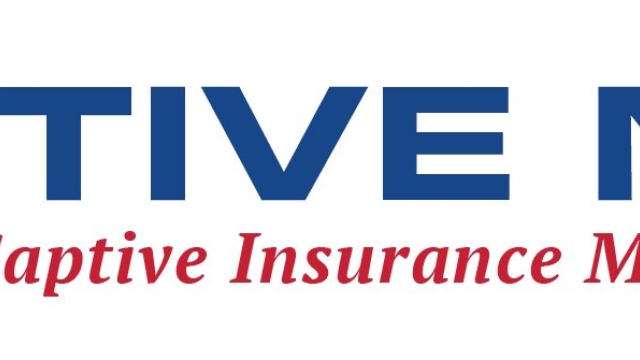Captive insurance, a lesser-known but increasingly popular risk management tool, has been gaining attention in recent years. Under the IRS 831(b) tax code, businesses have the opportunity to establish their own captive insurance company, allowing them to take control of their insurance needs and potentially unlock a range of advantages.
In simple terms, captive insurance refers to a type of self-insurance where a company creates its own subsidiary to provide coverage for its own risks. Unlike traditional insurance, where premiums are paid to external insurers, captive insurance allows businesses to retain the risks within their own company. This unique approach empowers organizations to have more control over their insurance policies, enhanced flexibility, and potential financial benefits.
Microcaptives, a subset of captive insurance, specifically cater to small to mid-sized companies, offering a cost-effective way to manage risks, protect assets, and gain tax advantages. The IRS 831(b) tax code provides certain tax benefits to qualifying microcaptives, allowing businesses to deduct their premiums as ordinary business expenses and potentially minimize their overall tax burden.
In this article, we will explore the advantages of captive insurance, delve into the intricacies of the IRS 831(b) tax code, and shed light on how microcaptives can be a game-changer for businesses. Whether you are unfamiliar with captive insurance or seeking to expand your knowledge on this subject, join us as we uncover the untapped potential of captive insurance and discover how it can provide tailored risk management solutions for businesses of all sizes.
The Basics of Captive Insurance
Captive insurance, also known as microcaptive insurance, is a unique risk management tool that offers a range of advantages to businesses. In this article, we will delve into the world of captive insurance and explore its potential to unlock significant benefits for companies.
At its core, captive insurance refers to a form of self-insurance where a company establishes its own insurance subsidiary to cover its risks. This entity, known as a captive, is formed to provide coverage to the parent company and its affiliates. By creating their own captive insurance company, businesses can gain greater control over their insurance programs and tailor them to their specific needs.
One of the key advantages of captive insurance is the potential for cost savings. Traditional insurance policies often come with hefty premiums that may not accurately reflect a company’s risk profile. With a captive, businesses can take a proactive approach to managing and financing their risks, which can lead to more efficient cost structures. Additionally, captives offer the opportunity for businesses to retain underwriting profit, investment income, and surplus funds that would otherwise be lost to a third-party insurer.
Moreover, captive insurance can provide companies with enhanced coverage options. Traditional insurance policies may come with limitations or exclusions that may not align with a company’s risk appetite. By establishing a captive, businesses can tailor coverage to their specific needs and gain access to broader risk protection. This flexibility allows them to address risks that may be unique to their industry or operations, providing an added layer of security and peace of mind.
In the next section, we will explore the IRS 831(b) tax code, an important aspect of captive insurance that offers certain tax advantages to eligible small captives.
(Section 1 of 3 sections)
Tax Benefits of 831(b) Captive Insurance
Captive insurance has gained significant attention in recent years, particularly within the context of tax planning. One of the key provisions that make captive insurance an attractive option for businesses is the 831(b) tax code. Under this code, certain small insurance companies, commonly referred to as microcaptives, can receive significant tax benefits.
The primary advantage of utilizing a captive insurance company is the ability to deduct insurance premiums paid to the captive entity. By establishing a captive insurance arrangement, businesses can effectively self-insure and transfer risk to their own captive, thereby reducing the need for traditional commercial insurance coverage. This not only allows for greater control over insurance costs but also enables the business to retain the profits generated from underwriting activities.
Moreover, microcaptives that meet the criteria laid out in the 831(b) tax code are subject to a unique tax treatment. Under this provision, qualifying microcaptives are able to exclude a certain portion of their premiums from taxable income. For tax year 2021, the maximum premium threshold eligible for exclusion is set at $2.3 million. This favorable tax treatment allows microcaptives to accumulate income on a tax-advantaged basis, providing additional resources for risk management and future growth.
It is important to note that while the tax benefits of captive insurance can be significant, proper compliance with IRS regulations is crucial. Captive insurance arrangements that fail to meet the requirements set out in the tax code may face adverse tax consequences, penalties, and potential challenges from the IRS. Therefore, businesses considering captive insurance should seek professional guidance to ensure compliance with the necessary regulations and to fully leverage the tax advantages provided by the 831(b) tax code.
Exploring Microcaptive Insurance
Microcaptive

In the world of captive insurance, one particular type that has gained considerable attention is microcaptive insurance. Microcaptive insurance is an important aspect of the captive insurance industry that is specifically governed by the IRS 831(b) tax code.
This specific section of the tax code outlines the guidelines and regulations for qualifying microcaptive insurance companies. These companies, classified as small captives, can enjoy certain advantages and benefits due to their size and structure.
By opting for microcaptive insurance, businesses have the opportunity to create their own insurance company, tailored to their unique needs. This allows them to gain more control over their risk management strategies and secure coverage for risks that may otherwise be challenging to find in the traditional insurance market. Microcaptive insurance can provide not only protection but also potential cost savings and tax advantages.
However, it is crucial to note that microcaptive insurance comes with its own set of considerations and potential risks. The IRS has been taking a closer look at microcaptive insurance arrangements, implementing stricter regulations to ensure proper compliance and prevent abuse of the 831(b) tax code. Businesses looking to establish a microcaptive insurance company must carefully navigate the rules and requirements to avoid potential legal and financial consequences.
In conclusion, microcaptive insurance offers businesses the opportunity to create their own insurance company, tailor-made to meet their specific needs. With potential advantages in risk management and tax benefits, microcaptive insurance can be an attractive option for businesses seeking more control over their insurance coverage. However, proper compliance with IRS regulations is crucial to avoid any potential pitfalls associated with microcaptive insurance arrangements.
















